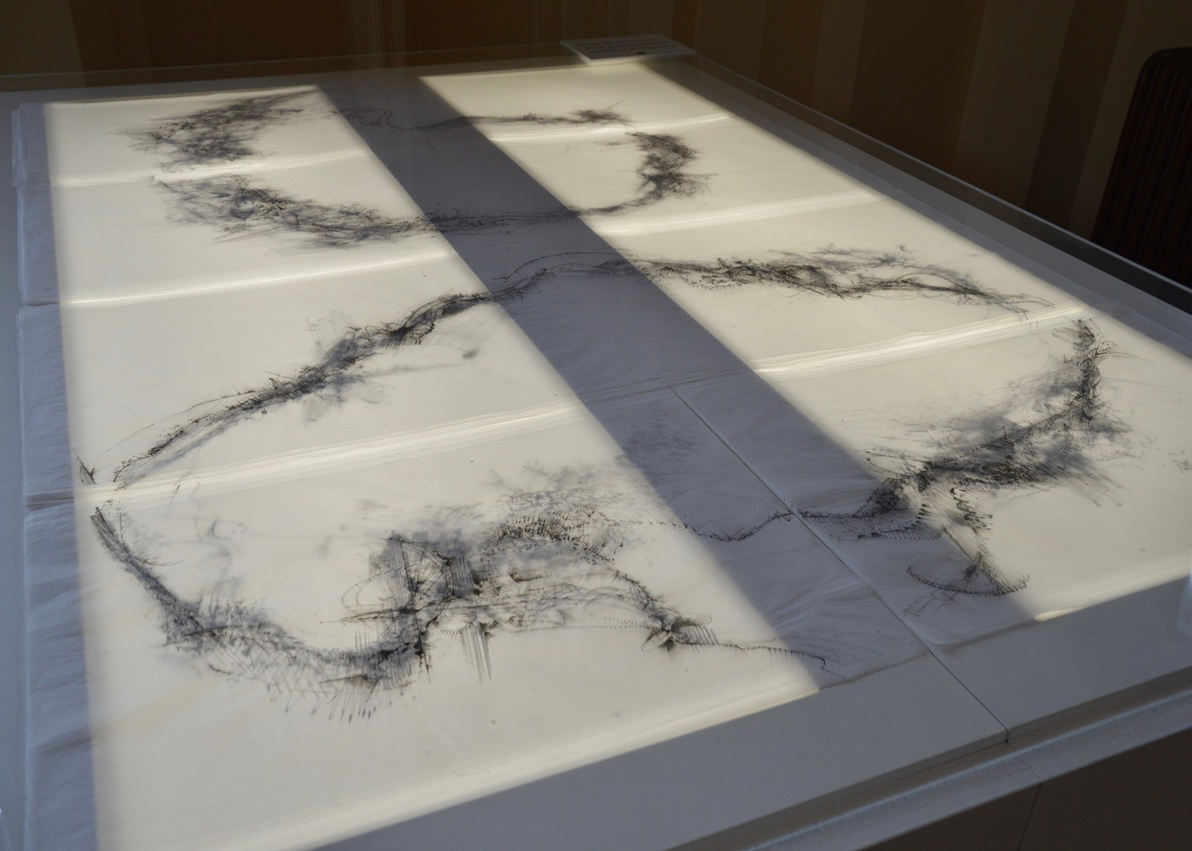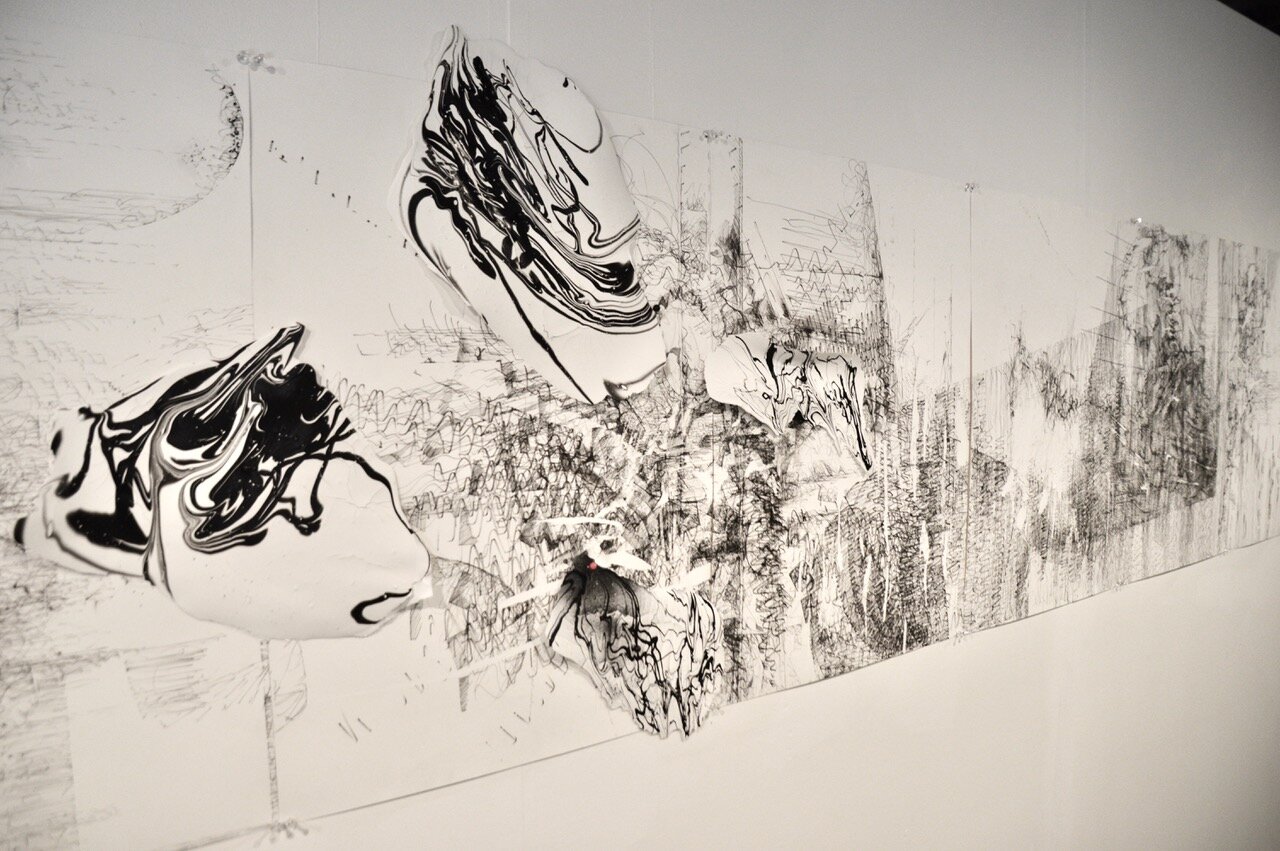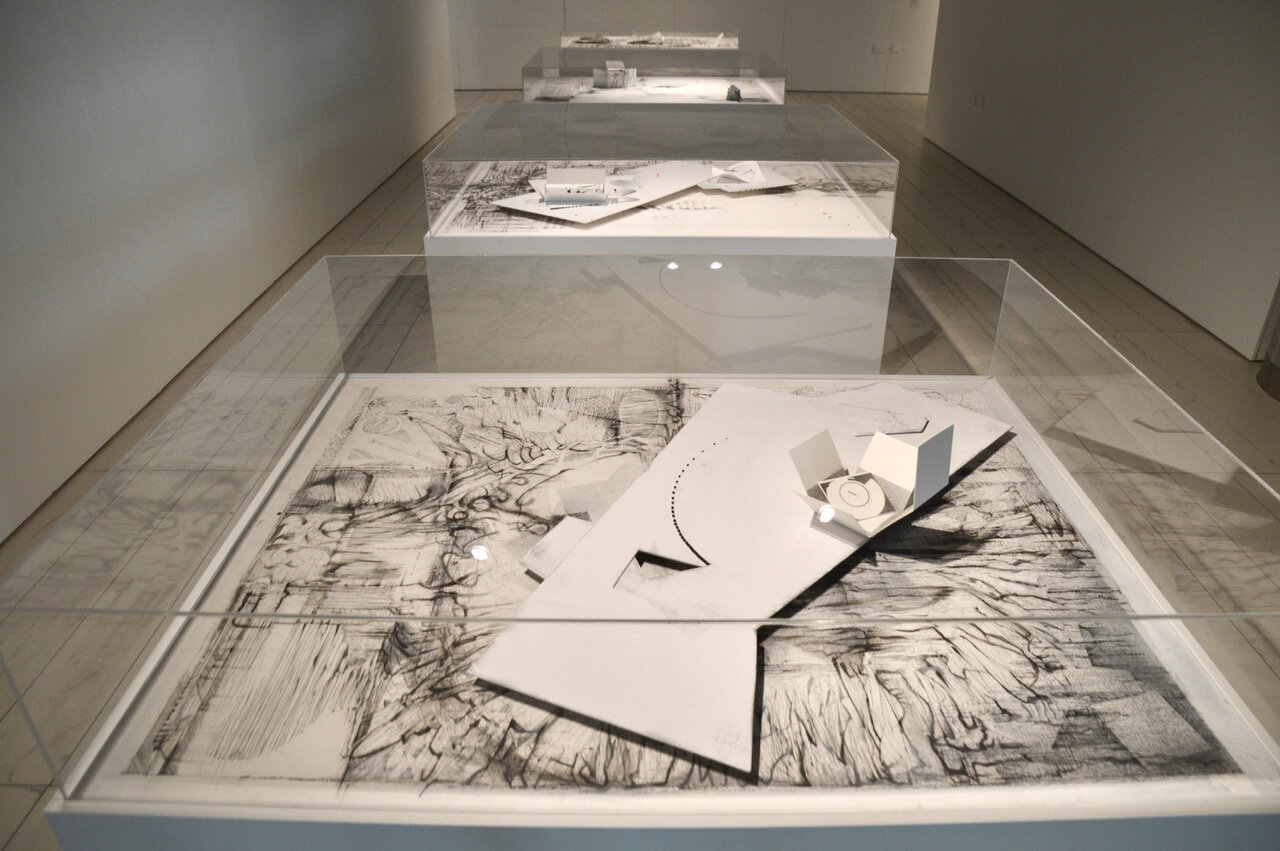ian Andrews
Fine Art
The sketchbook and the Collider is an on-going collaboration between Fine artist Ian Andrews and Professor Kostas Nikolopoulos from the particle physics group at the University of Birmingham. It evolved from Andrews’ residency at the University in 2018 culminating in the exhibition “The sketchbook and the Collider,” at the University curated by Jenny Lance. And the subsequent Arts Council funded exhibition at the Library of Birmingham entitled “Collision Event” in 2019 curated by David Miller.
The work compares and contrasts the material cultures surrounding the disciplines of art and science and focuses on a piece of essential equipment in each case, the sketchbook and the most advanced form of detector, the particle collider.
Despite obvious differences the specialisms of fine art and particle physics, they are both concerned with making the invisible visible. Scientific developments have seen the “everyday” dissolve into sub-atomic interactions only accessible by examining traces left in an enabling medium, a detector. A process mirrored by the artist expressing ideas and emotions through marks made and materials manipulated. Taking the same journey from something hidden to something revealed.
“Detectors are really the way that physicists express themselves, to say something that you have in your guts. In the case of painters, it’s painting with sculptors, its sculpture and in the case of the experimental physicist its detectors! The detector is the image of the guy who designed it.”
The sketchbook and the collider are arenas where different elements are brought together, sometimes violently! They both involve “active processes” that create and examine the visible traces of hidden interactions to determine if something significant has happened to change the way we understand the world around us.
The title “collision event” is the term given by physicists to particles colliding and in the context of the exhibition refers to the different specialisms coming together. As drawing is a process that captures change and elements in flux it is a perfect vehicle for exploring particles as they decay and interact, sometimes existing for a fleeting moment before changing again or annihilating in a collision.’
This led to the use of “moving image” work where footage of elements drawn with a 3-D pen are manipulated and edited in a way equivalent to the processes that particles undergo in the Collider. The film series ‘Black Edge” and “White Light Edge” involve the drawn elements constantly sliding to the periphery of the format alluding to particle physics research reanalysing data and searching for information in a different location.
Andrews says ‘The change in my practice that has come about during exposure to the research encountered working with the particle physics group at the University of Birmingham has been profound. My work now explores a non-representational visual language for the study of particle physics creating a dynamic space outside of the usual language of science but beyond a simple illustration of the processes underpinning the quantum world. The space creates its own continuum between the two disciplines bridging rigid definitions of what is considered art or science allowing the possibility of new ideas and understanding of the complex hidden world around us.’
The project has been supported by a series of workshops and events devised by Andrews and Nikolopoulos: practical workshops with primary and secondary schools and community groups using art to visualise particle interactions and talks including, “The physicist and the artist, a conversation,” as well as professional development sessions for teachers interested in cross collaborative initiatives. The workshops stemmed from the EU-supported CREATIONS project. The exhibition centres on the use of drawing as an interpretive and visualisation tool but also involves 3-D pen pieces on lightboxes and 4 new films.
Visitors of the “Collision event” said:
“My name is Maddy Ross, aged 12 and your exhibition has inspired me for my future.”
“Excellent fusion of art and physics that respects both disciplines.”
“In a world obsessed with labels…. what a fabulous show.”
“A wonderful/artist science adventure, helping to understand the unknown with imagery.”
“When two subjects come together and “collide” they can be more than the sum of their parts!”




